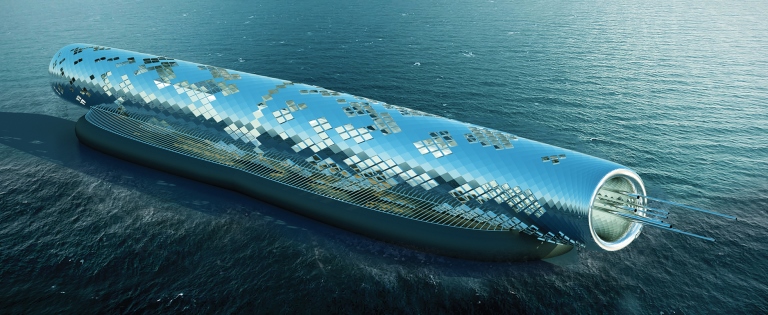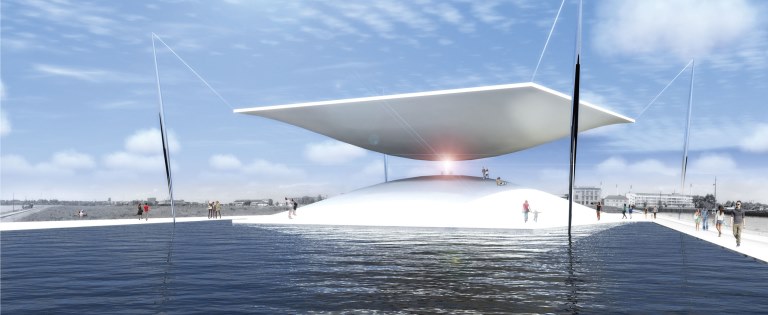At the intersection of public art and renewable energy
I recently moderated the inaugural event of the Urban Land Institute’s (ULI) Urban Art Forum, devoted to the work of the Land Art Generator Initiative (LAGI).
We are in a period of increasing awareness related to climate adaptations and the benefits of renewable energy. At the same time, when we undertake urban regeneration efforts, we recognise the centrality of narratives that create identity and meaning for people, such as art. The work of LAGI takes place at this fascinating intersection of renewable energy and public art.
The original ‘land art’ movement in the 1960s and 70s—which in many ways is the foundation of today’s Land Art Generator Initiative—produced extraordinary structures, art forms and sculptures using the natural landscape. The pioneers of the movement, artists like Richard Long, Walter deMaria, Michael Heizer and Dennis Oppenheim, expanded creative boundaries through their innovative and monumental siting of natural materials. Some of the concerns of the land art movement at the time centred around rejection of commercialization of art-making and enthusiasm with an emergent ecological movement, ideals that carry over into the current world of LAGI.
LAGI founders, Elizabeth Monoian and Robert Perry, were classmates at Carnegie Mellon University and are now married partners with overlapping interests, working closely together since the inception of LAGI in Dubai in 2010. They’ve received significant recognition, including grants from the (US) National Endowment for the Arts and the JM Kaplan Innovation Prize.
Elizabeth and Robert established LAGI to provide a platform for artists, architects and landscape architects to work together with engineers and scientists. They continue to focus on energy strategies that overlap with public art and architecture. Specifically, they advocate a new kind of sustainable energy infrastructure—works of art that provide energy at utility scale. They are best known for the initiation and management of the LAGI biennial design competitions (organised for selected sites in the United Arab Emirates, New York, Copenhagen, Santa Monica and Melbourne).
 The Pipe, Shortlisted Submission, LAGI 2016 Santa Monica: Abdolaziz Khalili, Puya Kalili, Laleh Javaheri, Iman Khalili, Kathy Kiany (Khalili Engineers). Energy Technologies: photovoltaic panels. Water Harvesting Technologies: electromagnetic desalination.
The Pipe, Shortlisted Submission, LAGI 2016 Santa Monica: Abdolaziz Khalili, Puya Kalili, Laleh Javaheri, Iman Khalili, Kathy Kiany (Khalili Engineers). Energy Technologies: photovoltaic panels. Water Harvesting Technologies: electromagnetic desalination.
 Solar Hourglass, 1st Place Winner LAGI 2014 Copenhagen: Santiago Muros Cortés. Energy Technologies: concentrated solar power.
Solar Hourglass, 1st Place Winner LAGI 2014 Copenhagen: Santiago Muros Cortés. Energy Technologies: concentrated solar power.
In their opening for the ULI event, Elizabeth and Robert identified power plants like Battersea as expressive urban icons, not just remote utilities. These energy producers were part of a visual narrative for the city. In an age of increased environmental awareness, they stressed that story-telling is the foundation of resilience. Using terms like ‘energy landscape’ and ‘sustainable expressionism’, they suggest the potentially rich cross-over between energy and art.
One of the highlights of the event were presentations of some of the outstanding submissions made for the LAGI biennial competitions, including proposals for an electromagnetic desalination plant with an annual production of 10,000 MWh/4.5 billion litres of drinking water and a solar hourglass that produces 7,500 MW/year with a thermal beam-down tower. Also mentioned was AECOM’s own submission: ‘Transpire’, an array of undulating cloud-making spires, powered by an extensive field of solar concentrators.
Much of the event discussion centered on how LAGI could best transform some of the large-scale competition proposals into realised projects. The founders noted that they maintain active relationships with some of the best qualified technical teams from more than 800 competition submissions—an extraordinary amount of intellectual property. Next steps would be to pair established teams with cities, developers and utility companies with ambitions to build ‘energy landscapes’.
Towards the close of the ULI session, AECOM’s Maged Hanna called LAGI ‘the Fendi of renewable infrastructure’. We can debate whether LAGI is sustainability fashion, industrial design, or art in its own right. But in the end, we can agree that the work of integrated art/energy teams and the overall LAGI initiative embodies astonishing innovation that makes us re-imagine the centrality of energy in our urban life.
More information: http://landartgenerator.org/






